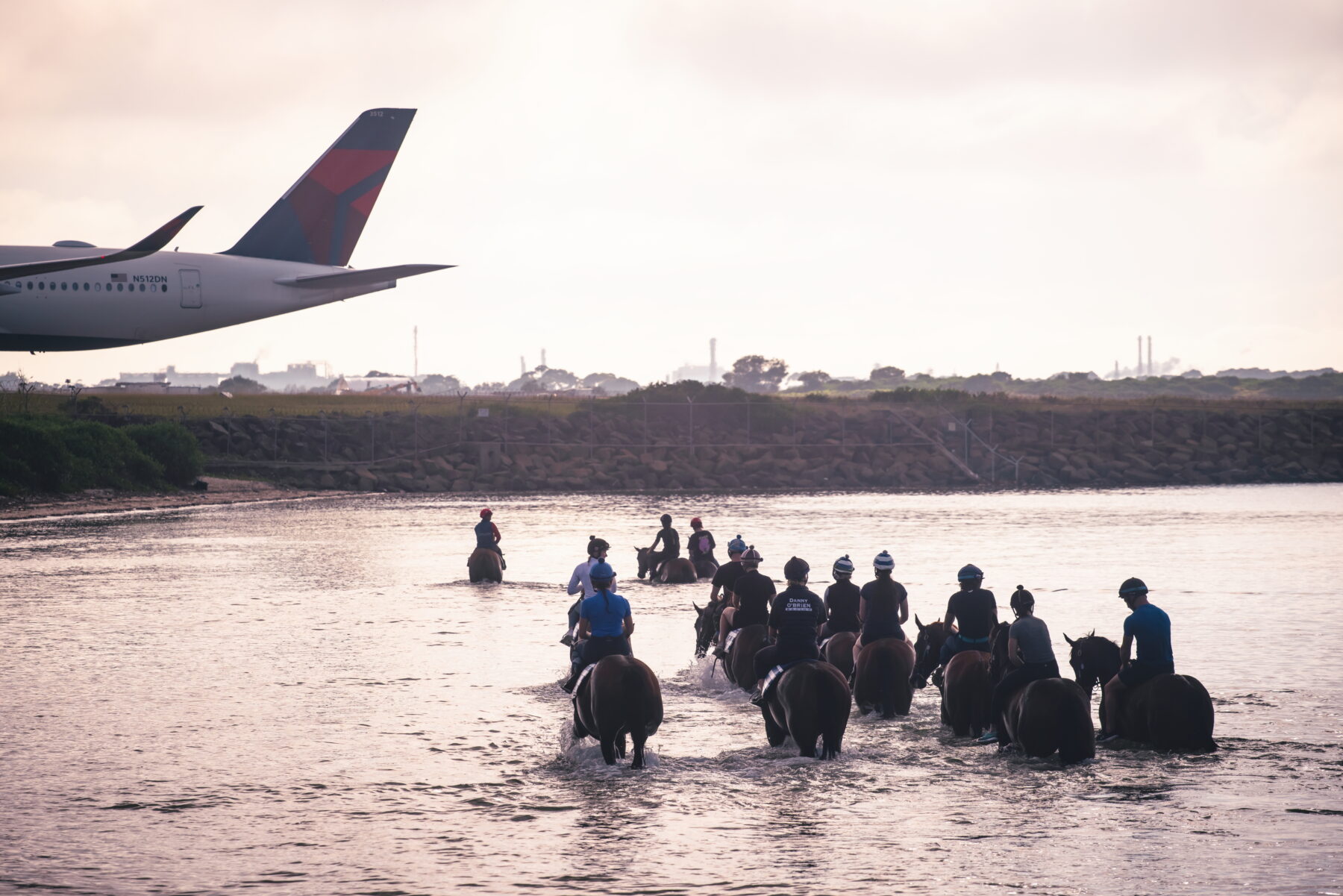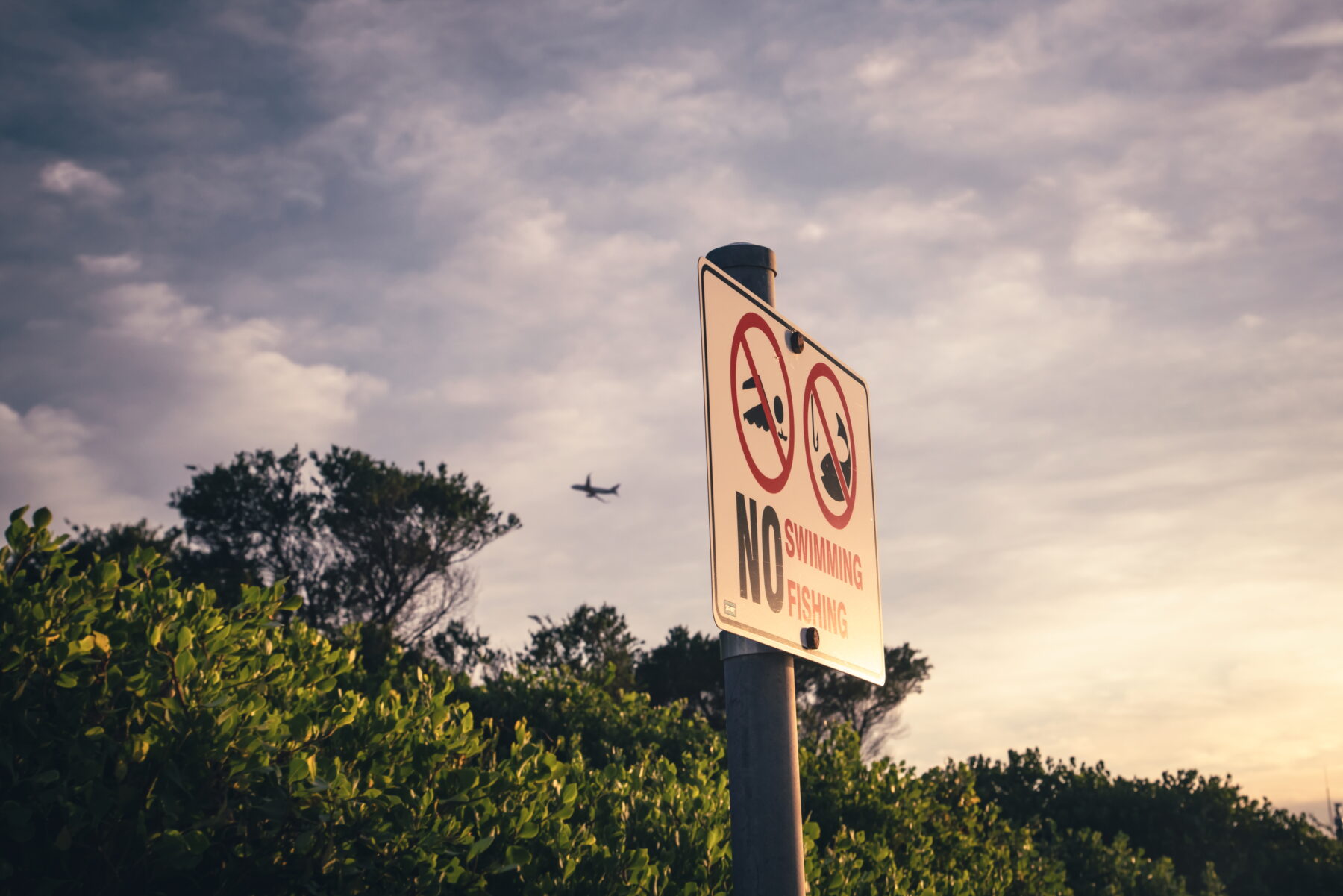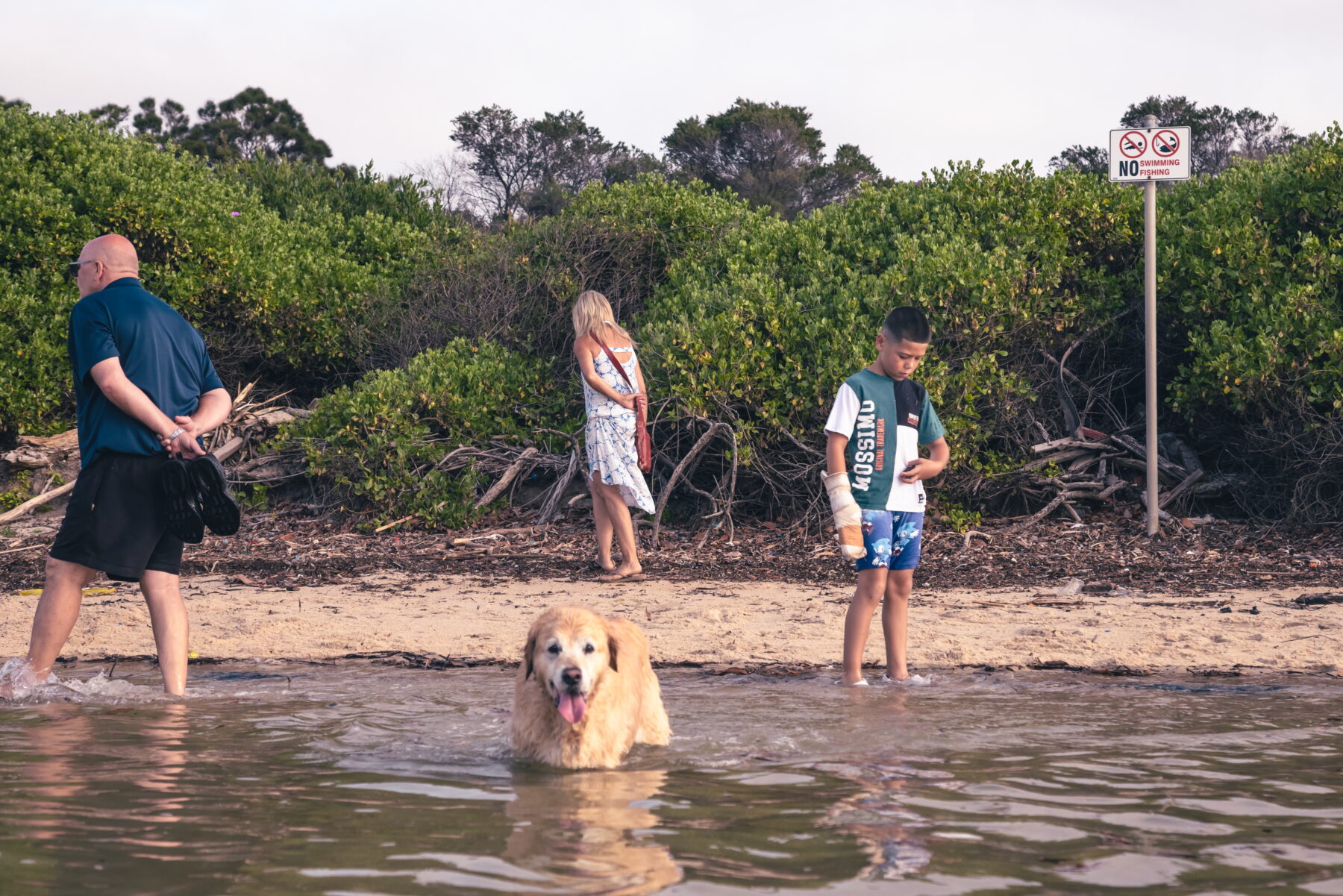Throughout Australia’s waterways there’s an invisible danger lurking. It’s not the crocodile or the bunyip, or the grasping branches of sunken trees. It’s a silent pollutant stealthily seeping into the bodies of aquatic creatures.
In November 2024 a CSIRO study of freshwater Macquarie River turtles (Emydura macquarii macquarii) reported one of the highest levels of PFAS (per- and polyfluoroalkyl substances) ever recorded in Australian animals. This chemical onslaught has had major impacts on turtle health and has contributed to the decline of the species’ already dwindling populations.
So, what are these pollutants that seem to be taking such a toll on Aussie wildlife? Why are they infiltrating our creeks and rivers? And just how pervasive is the problem?
Often dubbed ‘forever chemicals’, PFAS are a group of man-made chemicals that have sneakily woven themselves into our day-to-day lives. Diana Ackerman Grunfeld, a biochemical researcher at the University of New South Wales (UNSW), recently investigated the extent to which PFAS have entered global water sources. Published in Nature Geoscience, Diana’s PhD research collected data from PFAS studies conducted around the world. She compared the measurements from 45,000 surface water samples against national drinking water recommendations.
The results were concerning. “We found that most samples exceeded drinking water regulations regardless of how stringent they were,” Diana says.
PFAS were almost universally present in the water samples Diana looked at, and in many places PFAS concentrations were much higher than anticipated. These findings have powerful implications about the presence of PFAS in our environment. “You’re already exposed to PFAS just by living in the world. They’re everywhere,” she says.
PFAS uses
Since the mid-20th century, Australian companies have used PFAS for all manner of applications – think cosmetics, cleaning products, fast-food packaging and frying pans. These non-stick, stain-resistant, waterproof and heatproof substances are incredibly versatile.
One use for PFAS that’s particularly important in Australia is in firefighting foam. Though far from being the only source, the highest concentrations of PFAS measured in Australia during Diana’s study were around areas that had been used for firefighting training. “Around defence bases or airports where they’re training to put out fires, PFAS have seeped through the ground and made their way into nearby water,” Diana says.
Beaches in Botany Bay in Sydney recently made headlines due to PFAS contamination. Tower Beach, also known as ‘Planespotting Beach’ because of its location beside Sydney Airport, has been quietly closed to swimmers and fishers for the past two years because of concerns about PFAS presence in the water. Despite the closure, many residents continue to use the beach, unaware of the potential risks. Concerns have also been raised about PFAS contamination at Kyeemagh Dog Beach just a short distance away.


In a landscape beset by some of the most damaging and costly bushfires in history, products that can quickly and effectively quell errant blazes are vital. And PFAS fit the bill perfectly. Heat, oil and water-resistant, they’re the ideal candidates to smother a fire before it damages homes, ecosystems and human lives. Along with their many other uses, this is a big reason why PFAS have become so globally abundant.
But to fully grasp why PFAS are so pervasive, it’s important to understand how they endure in natural environments. The robust bonds that make up their molecular structure mean PFAS are more difficult to break down than almost any other type of chemical. While that means they’re incredibly useful, most environments aren’t equipped to process these indelible substances. “PFAS don’t exist naturally,” Diana says. “They’re chains of carbon with fluorine around them, which is the strongest bond you can get in organic chemistry. That makes them very persistent in the environment. They don’t break down, even in very low concentrations.”
Once PFAS enter the environment there’s very little that can be done about them, since most natural ecosystems are incapable of breaking them down. This ‘persistence’ has allowed them to disperse through groundwater, rivers, ocean currents and even through the atmosphere, reaching every corner of the globe.
It presents something of a conundrum. On the one hand, anything that helps prevent disasters – such as the bushfires Australia has seen over the past few decades or the recent California wildfires – should be welcomed. And that’s before you consider all their other uses. On the other hand, pouring high concentrations of man-made chemicals that never disappear into Australian ecosystems is hardly an ideal circumstance. Especially when you understand the harm PFAS might be doing.


One of the more insidious qualities of PFAS is that they ‘bioaccumulate’. Our bodies don’t filter them out as easily as many other would-be toxins, so they can steadily increase their concentrations within us over time. The longer you’re exposed to them, the higher your ‘personal PFAS factor’ may be.
In the low doses to which most people are exposed, PFAS are relatively harmless. But in high concentrations they can pose serious health risks. “PFAS have a high certainty of being associated with things like liver damage, kidney cancer, testicular cancer and lower birth weight,” says UNSW Professor Denis O’Carroll, senior author of the recent study in Nature Geoscience. “They’re also associated with a reduced vaccine response, so that could reduce the efficacy of the COVID vaccine.”
Although the World Health Organisation officially categorised some types of PFAS as “carcinogenic to humans”, at this stage these associations are only that: associations. We don’t yet have evidence that proves PFAS are linked to human disease, and both Denis and Diana stress there’s no cause for concern. “There’s no need to stop drinking tap water and stop eating takeaway food,” Diana says.
But even if PFAS aren’t a danger to human health, the same can’t necessarily be said for wildlife. PFAS’ proclivity for moving through waterways means aquatic and marine species are particularly susceptible. The bioaccumulation quality of PFAS means this is especially true for top-order predators, which accumulate PFAS from every level of the food chain below them.
The effects of PFAS are evident all over Australia. Critically endangered Burrunan dolphins (Tursiops australis) in Victoria have higher PFAS concentrations in their bodies than any dolphins in the world. In Perth’s urban wetlands, tiger snakes (Notechis scutatus) with high concentrations of PFAS are often sickly and small.
As for the PFAS-stricken Macquarie River turtles in Queensland, CSIRO’s study painted a bleak picture. High concentrations of PFAS in their bodies disrupt their metabolisms and immune systems, sapping their energy and risking their health. And it doesn’t end there. PFAS contamination alters the chemistry of eggs in pregnant females. In high-PFAS turtle populations fewer hatchlings are born, and they often have deformities. As a result, Macquarie River turtle populations are on the brink of collapse. Many more species, such as the endangered Australian sea lion (Neophoca cinerea), have been found with high PFAS concentrations in their bodies. Though the health effects of PFAS on those species are yet to be shown, the growing frequency of poor health and disease linked to these substances in wildlife populations is worrisome.
PFAS regulation
So, how do we deal with these forever chemicals that have contaminated water bodies all over the world and never leave the environment?
It’s possible to clean PFAS out of water using activated carbon. This is already done in most cities and towns to treat drinking water. However, that technique may create more problems than it solves. “PFAS are all over the world, and they’re super hard to clean up. In fact, on a global scale, it’s almost impossible. The carbon emissions associated with trying to treat that amount of water would be crazy. You’d be trading off safe water for a massive carbon footprint and climate change,” Denis says.
Instead of trying to strip PFAS out of the environment, Denis suggests we focus on reducing the amount going in. That can be done through simple efforts such as substituting PFAS-laden products. “Just because we can use a chemical doesn’t mean we should use a chemical. Rather than [using] the highest-end window washer that’s loaded with chemicals, you could just use vinegar and water,” Denis says.
Of course, easy, PFAS-free substitutes aren’t always readily available. Even if they were, well-intentioned personal action does little to curtail the mass industrial use of forever chemicals worldwide. That’s why, in Diana’s opinion, the best way to prevent PFAS from entering the environment is by regulating their use. But trying to establish regulation around PFAS raises a surprisingly complicated question: what exactly are PFAS?
The term ‘per- and polyfluoroalkyl substances’ covers an enormous range of chemicals, some more harmful than others. On top of that, new PFAS compounds are constantly being developed. “In our paper we said there are around 14,000 types of PFAS, but some people put it in the hundreds of thousands. It depends how you define them,” Diana says.


The Stockholm Convention – a treaty adopted in 2001 to protect against persistent organic pollutants – regulates PFAS on a case-by-case basis, restricting the use of individual compounds. But because PFAS are so complex, manufacturers can make minor adjustments to their chemical structure and create a new compound that behaves the same way but circumvents restrictions. “It’s really hard to play a game of keep-up when they’re creating things faster than we can regulate them,” Diana says.
To tighten this loophole, Diana proposes that regulators cast a wider net. “I think it would be beneficial to come up with a standardised definition for PFAS so that we could regulate them as a class rather than individual compounds,” Diana says. A universal definition for PFAS would allow legislators to cover all their bases, restricting the use of PFAS as a collective chemical group and preventing the opportunistic use of new compounds.
But ultimately, to prevent these contaminants from entering our ecosystems – and our bodies – governments need to enforce PFAS regulations. This has been done inconsistently, to say the least, but progress is being made. Since 2002 the Australian Government has been phasing out its use of PFAS in firefighting foams. More recently, the New Zealand Government announced it will completely ban the use of PFAS in cosmetics from 2026. Globally, governments are being pressured to enforce the strict regulations set by the Stockholm Convention. But there’s still a long way to go before we can get ahead of our PFAS problem.
The near-universal presence of forever chemicals is certainly worth noting, but Denis and Diana don’t believe it’s something to panic about just yet. In Australia, the concentrations of PFAS in most water sources are at manageable levels, and despite having more lax regulations than other nations, drinking water is still strictly regulated. “It’s not doom and gloom. We just have to be thoughtful about our stewardship of the environment,” Denis says.
On the back of that thoughtful stewardship and care, the hope is that we can eventually prevent PFAS from doing further damage to us or our habitat – and perhaps make forever chemicals a thing of the past.
